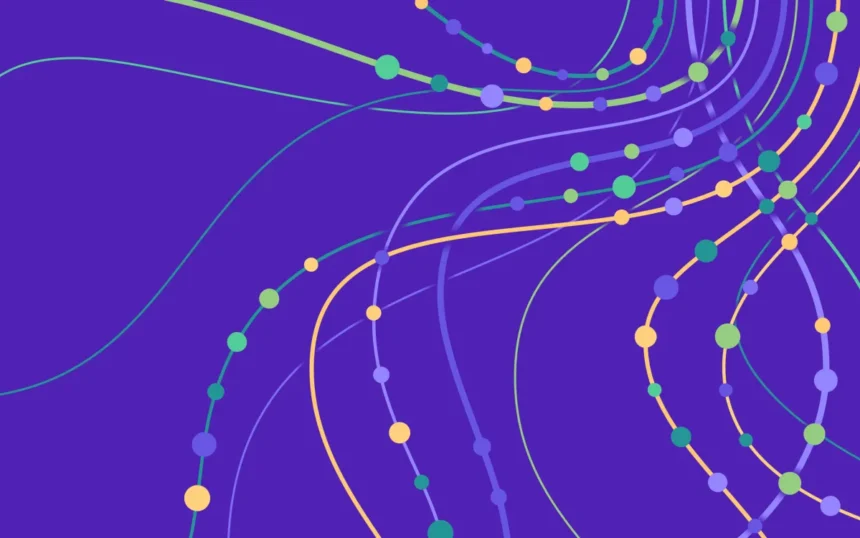Artificial intelligence is reshaping the world, from the way we search for information to how we interact with digital tools. But as AI grows more powerful, so do the costs of running these models. One of the most widely used strategies to reduce these costs, known as quantization, is starting to show its cracks. Recent research suggests that we may be fast approaching the limits of this technique — with significant implications for the future of AI.
What Is Quantization, and Why Does It Matter?
In the simplest terms, quantization involves reducing the number of bits — the fundamental units a computer uses to process information — needed to represent data within an AI model. Think of it as the difference between giving someone the time as “noon” versus “12:00:01.004.” Both answers are correct, but one is far more precise. The level of precision you need depends on the context.
In AI, quantization is often applied to parameters, the internal variables that models use to make predictions or decisions. This is a critical optimization since models perform millions (or even billions) of calculations during inference — the process of generating an output, like a ChatGPT response. Fewer bits mean fewer calculations, which translates to lower computational and energy costs.
Quantization is not to be confused with “distillation,” a separate process that selectively prunes unnecessary parameters from a model. While both aim to improve efficiency, quantization is more like simplifying the way information is represented, rather than reducing the information itself.
The Growing Limitations of Quantization
For years, quantization has been a cornerstone of making AI systems more efficient. However, new research from leading institutions like Harvard, Stanford, and MIT reveals that quantization may have more trade-offs than previously understood. Specifically, the study found that quantized models tend to perform worse if their unquantized counterparts were trained extensively on large datasets.
This finding challenges a widely held assumption in the AI industry: that you can take a large, high-performing model, apply quantization, and achieve the same results with reduced costs. Instead, the research suggests it might sometimes be better to train a smaller model from the outset than to quantize a massive one.
The Ever-Shrinking Model
Quantization’s limitations are already making waves. For instance, developers recently observed that Meta’s Llama 3 model suffers more from quantization than its competitors, likely due to the way it was trained. This is troubling news for companies investing heavily in massive AI models to boost answer quality while relying on quantization to make them affordable to operate.
To understand the stakes, consider Google. The tech giant spent an estimated $191 million to train one of its flagship Gemini models. Yet the cost of inference — using the model to generate responses — dwarfs this figure. If Google were to use an AI model to answer just half of all Google Search queries with 50-word responses, it’d rack up $6 billion annually in inference costs.
This underscores a hard truth: inference, not training, often represents the largest expense for AI companies. Quantization is meant to alleviate these costs, but its diminishing returns could force the industry to rethink its strategies.
The Scaling Dilemma
Major AI labs like Meta, OpenAI, and Google have long subscribed to the mantra of “scaling up.” The belief is simple: train models on increasingly larger datasets and with more computational resources to achieve better results. For example, Meta’s Llama 3 was trained on a staggering 15 trillion tokens (units of raw data), compared to just 2 trillion tokens for Llama 2.
However, scaling has its limits. Reports indicate that recent colossal models from Google and Anthropic failed to meet internal performance benchmarks, suggesting that simply throwing more data and compute at a problem doesn’t guarantee better outcomes. And if quantization further degrades the performance of these massive models, the entire scaling paradigm could come under scrutiny.
Precision Matters: The Next Frontier in AI Optimization
If scaling up is becoming less effective, and quantization has its limits, what’s next? The answer may lie in training models with lower precision from the start.
Precision, in this context, refers to the number of digits a numerical data type can accurately represent. Most models today are trained in 16-bit precision (“half precision”) and then quantized to 8-bit precision for inference. This is akin to solving a math problem with detailed calculations but rounding the final answer to the nearest tenth.
Newer hardware, like Nvidia’s Blackwell chip, supports even lower precisions, such as 4-bit formats like FP4. Nvidia touts this as a breakthrough for energy-efficient data centers. But according to the study, reducing precision below 7 or 8 bits can cause noticeable drops in model quality — unless the model is extraordinarily large.
The Road Ahead: Quality Over Quantity
The findings serve as a reminder that AI is still an evolving field with many unanswered questions. Shortcuts that work in traditional computing don’t always translate well to AI. For example, while it’s fine to say “noon” when asked the time, you wouldn’t use the same imprecision to time a 100-meter dash.
“The key takeaway is that there are limitations you cannot naïvely bypass,” says Tanishq Kumar, the lead author of the study. He believes the future of AI lies not in endlessly scaling up or blindly pursuing lower precision but in smarter data curation and innovative architectures designed for low-precision training.
One promising avenue is meticulous data filtering, where only the highest-quality data is used to train smaller, more efficient models. Another is developing architectures specifically optimized for stable performance in low-precision environments.
No Free Lunch in AI
At its core, the debate over quantization reflects a broader truth: there’s no free lunch in AI. Every optimization comes with trade-offs. As companies push the boundaries of what’s possible, they’ll need to carefully weigh efficiency against performance.
The path forward will likely involve a mix of approaches, from refining quantization techniques to exploring entirely new ways of training and serving models. What’s clear is that AI’s journey is far from over, and the quest for efficiency will continue to drive innovation in unexpected directions.










